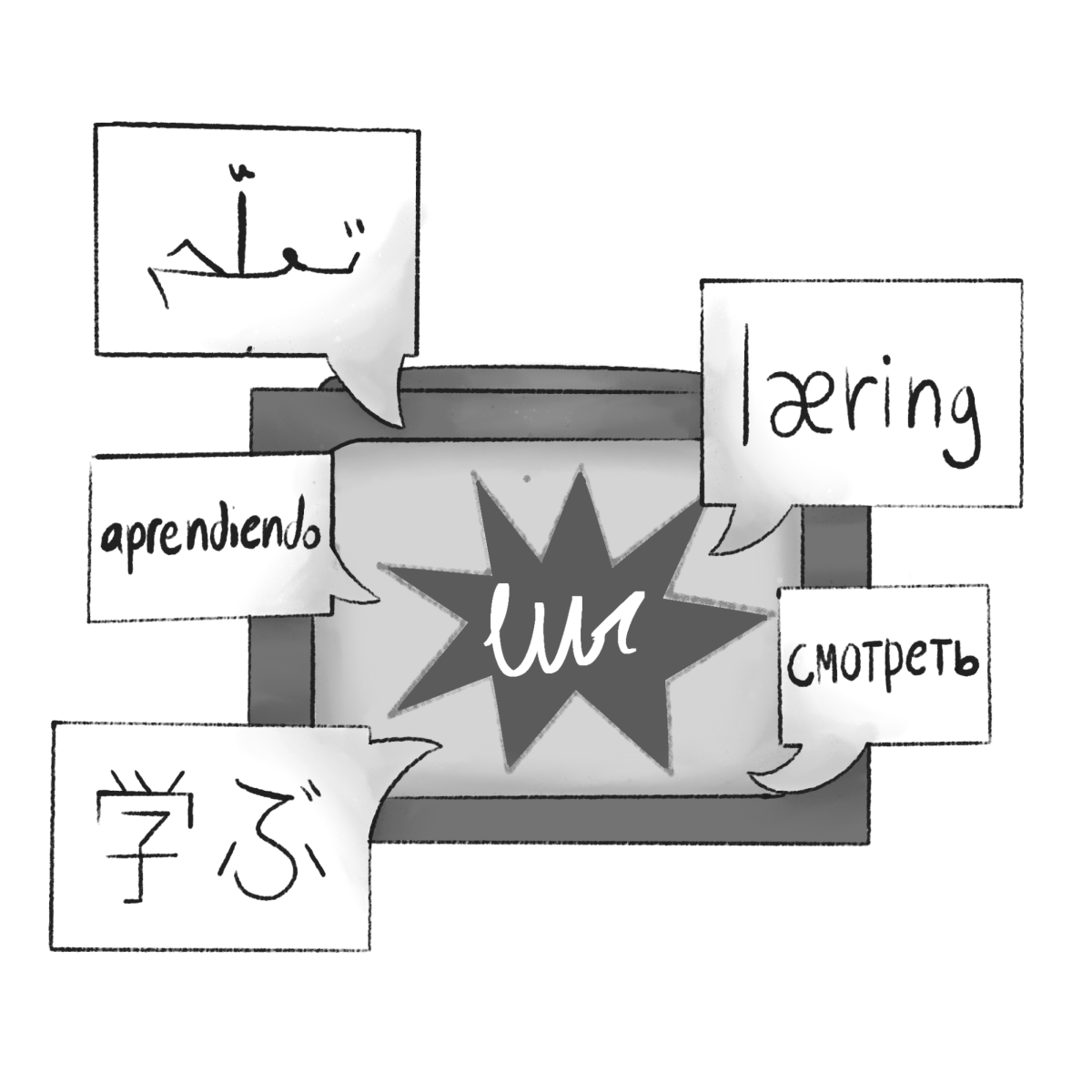From learning a new accent and alphabet to grasping the ability to converse with others, practicing a new language can be challenging for many. There are tools, however, that learners can use to gain a deeper understanding of the language. Utilizing media such as movies, TV shows, books and popular apps like Duolingo can give students a leg up on grasping a language.
One of the more traditional types of language learning mediums are textbooks, which may not be as helpful as they may initially seem. Spanish teacher Jose Gomar feels that the Spanish textbooks are often outdated and unhelpful for students, thus leaning toward showing movies and TV shows to his students.
“The textbooks, sometimes they are useful, but many textbooks have a lot of faults and they tend to be old. So you get an old version from 20 years ago, 15 years ago, and sometimes they don’t do a good job obtaining the information,” Gomar said.
Gomar also found that watching TV shows and movies helps students get comfortable with the fast conversations they will be surrounded by once they start speaking the language outside of school.
“They (films) do help because they show you the real pace of the target language,” Gomar said. “Because sometimes in the classroom, you learn a language, and you are learning at a very slow rate. It is not the same pace. When you go out in the real world, you will encounter a much faster pace.”
Senior Dylan Vu explained how he often watches movies or reads books in his Spanish class. Similar to Gomar, Vu noticed the faster speech, mentioning how it was hard for him to keep up.
“In class, sometimes my teacher presents movies to us. We watch films in class, and they have English subtitles. I will try to derive this translation from English,” Vu said. “Sometimes it works, but it’s native Spanish, so they speak a little too fast. I think it’s kind of hard to understand.”
To combat any potential misunderstanding, subtitles can be utilized. Gomar pointed out that when he presents movies or TV shows during class, he usually adds Spanish subtitles to help students make connections between how the Spanish is actually spoken and what it looks like written out.
“It’s helpful to have those subtitles in Spanish while they’re also speaking Spanish because if there’s something you don’t catch, then you can look at those subtitles and say, ‘Okay, this is what they said,’” Gomar said.
Vu feels that other forms of practice are just as helpful and important as watching movies or TV shows because they help one get a baseline understanding of vocabulary.
“I think other activities in class are usually as important as watching movies, like doing crosswords, learning conjugations and puzzles. I think that really helps you build your Spanish vocabulary just as much as movies do,” Vu said.
Other ways of getting exposure to a language can be through social media or books. Junior Hanna Jarota found that taking advantage of these platforms has helped her with learning Spanish.
“Another really helpful tool that I’ve used to learn is consuming the same media that I would normally consume, like TikToks, movies and books, but in the language I am learning,” Jarota said. “This helps keep me engaged and learn words and sentences that I will actually use.”
Jarota learned Polish as her first language but also mentioned that when she first learned her second language, English, she was young and was taught through TV shows and media, giving her a lot of time to practice and master the language.
“I would say that I had a pretty big advantage since I learned it at such a young age,” Jarota said. “My parents began exposing me to English through TV shows and by reading me books.”
Vu advised that when one first starts learning a language, the best thing to do is to start learning from different types of platforms, such as videos, apps and shows.
“I think you should really start out simple, like learn languages through tutorials or videos that speak at a slower pace than most other shows because it’s kind of hard to get used to it if you start with really high levels of Spanish,” Vu said.
Besides the direct media, Jarota feels that language learning apps such as Duolingo have not been very helpful since they teach things that are unnecessary.
“Personally, I haven’t found apps like Duolingo to be very helpful as they tend to teach you random words and sentences you likely won’t need, and they don’t focus on sentence structure and verbs,” Jarota said.
Vu, however, thinks those apps can be helpful because they allow one to practice a language outside of class.
“I think learning through Duolingo is actually – could actually – be useful if you’re learning it outside of school, especially just in practice, would be really good,” Vu said.
Regardless of what learning tool one chooses to use when learning a new language, Gomar explained that consistent practice and being able to immerse oneself in the culture are the best ways to take on the challenge of learning a language.
“Just keep learning every day something small, don’t stop and of course, if you have the opportunity to immerse yourself in the culture and the language, that is going to be very helpful,” Gomar said.


